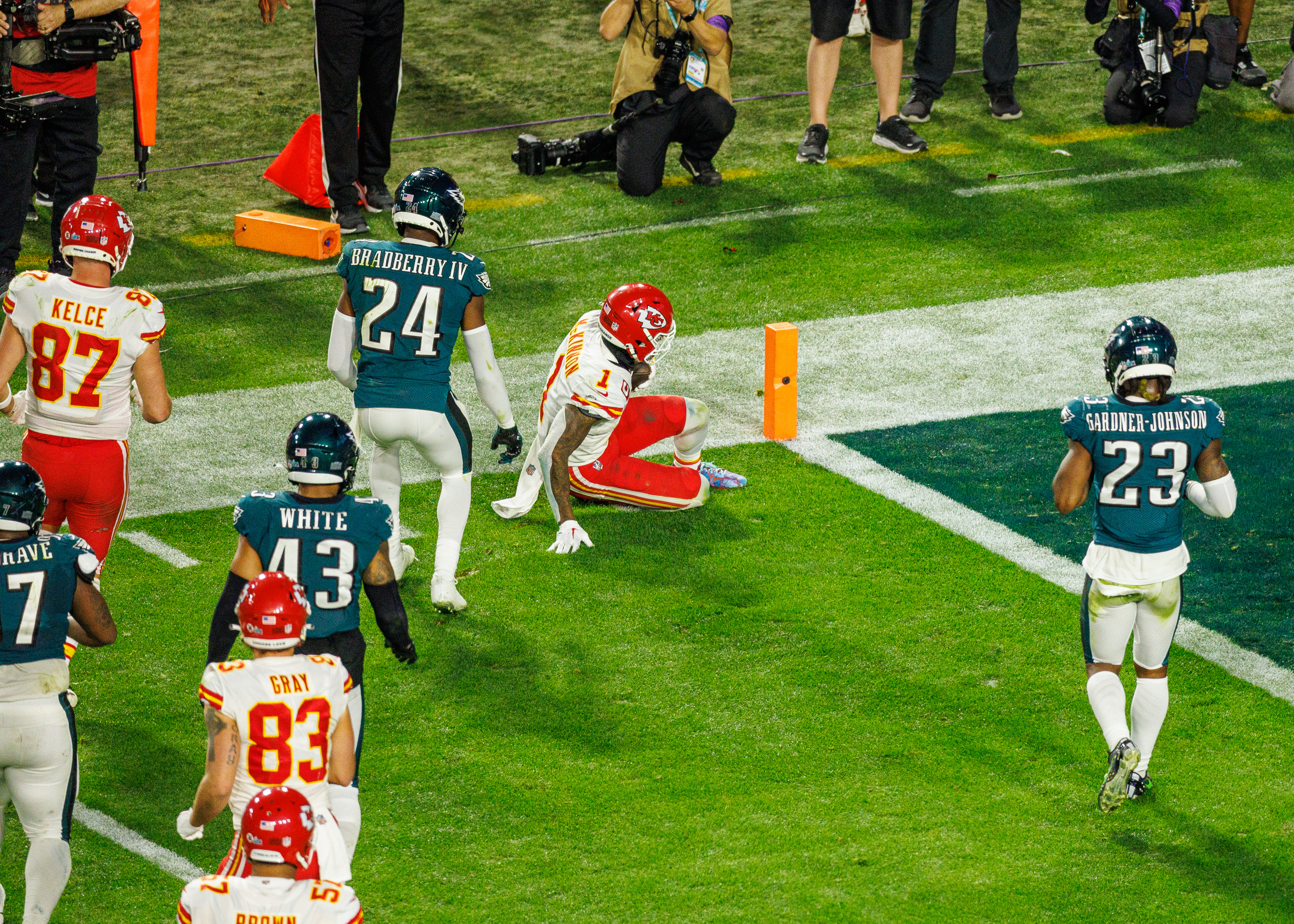NFL Scores Big In Advertising Effectiveness Bowl, EDO Report Finds
Thanksgiving day games were engaging for sponsors

As the National Football League gets ready to kick off a new season, a new report says that not only is pro football TV’s most-watched programming, but it’s also provides the most impactful advertising environment.
Research and analytics company EDO, in a review of the 2022-23 season said that during the regular season, advertisers spent $3.7 billion on ads during NFL games on broadcasting and streaming.
Those ads had an engagement rate 20% higher than broadcast primetime average.
During the playoffs, advertisers spent $632 million on ads. Those ads had an engagement rate 19% higher than the primetime average.
And for Super Bowl LVII, advertisers spent $757 million and got an engagement rate 221% higher than the broadcast primetime average.
Including the Super Bowl, the NFL had five of the top ten programs for TV advertising effectiveness, EDO said.
Also Read: Nielsen, EDO Integrate Data on Viewership, Outcomes
The smarter way to stay on top of broadcasting and cable industry. Sign up below
Three of the five most impactful regular season matchups aired on Thanksgiving day–the lead-in to the year’s biggest shopping weekend.
And the first night Thursday Night Football streamed on Amazon Prime Video produced the No. 3 most impactful game during the season.
Overall , the first season of Thursday Night Football games on Amazon were 116% more effective at driving consumer engagement than the broadcast primetime average.
This season, Amazon will stream a game between the Jets and the Dolphins on Black Friday, the heavy-duty shopping day after Thanksgiving.
The strength of sports on both traditional linear TV and streaming was evident in the upfront, where prices for entertainment programming was down, but prices for sports were up, particularly for the NFL.
“As Convergent TV marketers, we know the NFL has long been the undisputed champion of live TV — keeping our industry running smoothly during more than a decade of time-shifting, cord-cutting, and social media,” said Kevin Krim, CEO of EDO.
“Only now, a pair of Hollywood strikes are threatening to derail the premium scripted programming advertisers have long used as alternatives to live sports investments. The result? The NFL’s live, premium content has become that much more integral to an effective media plan. Goodbye Saturday Night Live, hello Sunday Night Football, Krim said.
Some NFL advertisers did better than others. EDO ranked the effectiveness of the ads run by marketers in several categories and found that the most effective ads in the alcoholic beverage category were Crown Royal, Patron and Busch.
The luxury auto category was topped by BMW, Mercedes-Benz and Lexus, and the top non-luxury auto brands were Toyota, GMC and Ford.
Among food and beverage consumer packaged goods, Glaceau Mountain Dew and Dr Pepper were the top brands.
The top home and personal consumer packaged goods advertisers were Invisalign, Chanel and Oral-B.
In financial services, the leaders were SoFi, Experian and Nerd Wallet. The insurance category was topped by Aflac, USAA and Allstate.
Restaurant advertisers Panera Bread, Popeyes Louisiana Kitchen and Pizza Hut did best with the NFL and Dick’s Sporting Good, Old Navy and Rakuten were the top retailers.
“Luxury auto and restaurant advertisers had particularly strong investment and ad engagement throughout last NFL season,” said Laura Grover, SVP, Head of Client Solutions, EDO.
“Regular season ad engagement for categories including CPG: Food & Beverage, Non-Luxury Auto, and Retail performed about the same, on average, as their respective category primetime performance benchmarks,” Grover said. “Despite this, ad performance for these categories saw a major boost from campaigns run during the playoffs. Ads from CPG Food & Beverage brands were 102% more effective than the category's primetime average in the playoffs, Non-Luxury Auto ads were 42% more effective than its category average, and Retail ads were 35% more effective.”
Jon has been business editor of Broadcasting+Cable since 2010. He focuses on revenue-generating activities, including advertising and distribution, as well as executive intrigue and merger and acquisition activity. Just about any story is fair game, if a dollar sign can make its way into the article. Before B+C, Jon covered the industry for TVWeek, Cable World, Electronic Media, Advertising Age and The New York Post. A native New Yorker, Jon is hiding in plain sight in the suburbs of Chicago.

